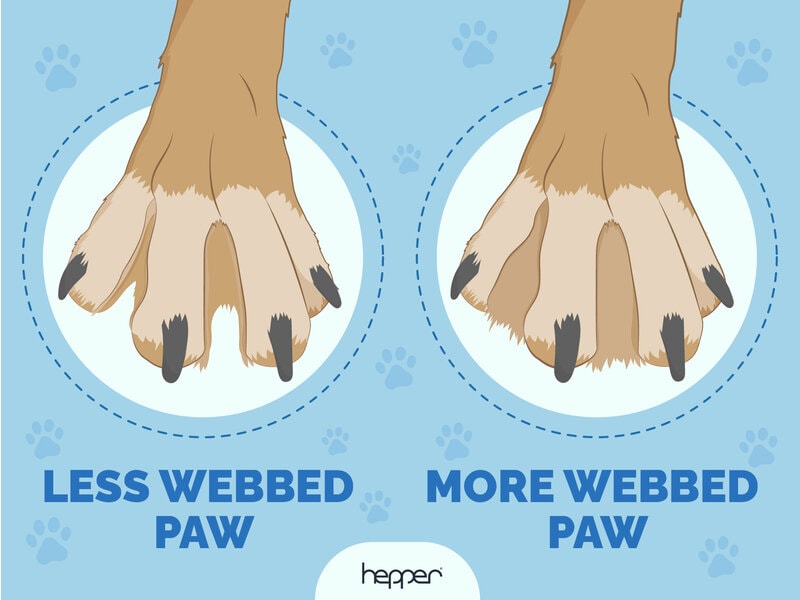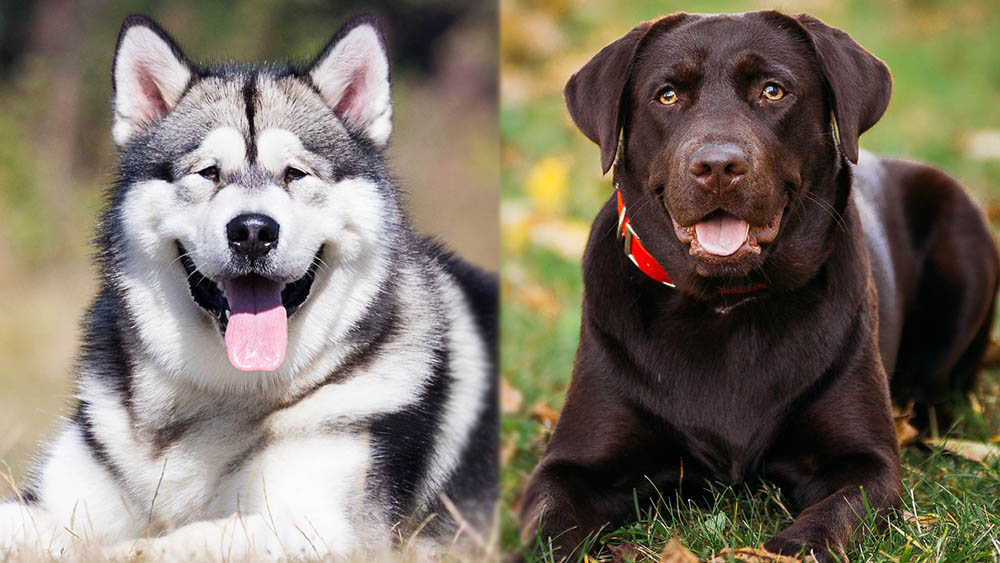Do Beagles Have Webbed Feet? Vet Approved Breed Facts & FAQ
Updated on

Because they were initially bred for hunting, Beagles possess specific traits designed to help them do their job well, such as a fabulous voice that carries for miles. We know some hunting breeds are said to have webbed feet to help them swim, but are Beagles one of them? Beagles have some webbing on their feet, but it’s not as prominent as in other breeds, such as the Labrador Retriever.
In this article, we’ll examine why your Beagle’s feet may look webbed and how and why webbed feet exist. You’ll also learn how to keep your Beagle’s feet clean and healthy, especially if they spend a lot of time outdoors.
Why Beagle’s Feet Look Webbed
If you look closely at your Beagle’s paws, you’ll see that they have skin between each of their toes. This is called interdigital skin; all dogs have it as part of their basic paw structure. Because of this, all dogs’ feet usually look at least partially webbed.
The appearance and size of this skin can vary somewhat between breeds and even individual dogs. When this skin is particularly visible, extending almost to the end of the toes, that’s typically considered a webbed foot by pet owners. Beagles don’t usually have this prominent webbing.

When are Webbed Feet a Problem?
Vets do not usually refer to dogs’ feet as webbed unless it is the result of a developmental issue, something called syndactyly. In the womb, puppies have a membrane between their toes, but it usually gets smaller, leaving the dog with just interdigital skin. However, that doesn’t always happen, leaving some dogs with fused or webbed toes. This is not reported to be a common problem in dogs.
Why Are Webbed Feet Useful?
The extra skin between the toes may serve the same purpose as a duck’s webbed feet: improved swimming ability. For that reason, it reportedly creates an advantage for dogs bred for water retrieving and rescue. Developers of breeds such as the Labrador Retriever and Newfoundland probably began to deliberately select dogs with webbed feet to try and pass on this trait.
Most breeds that commonly display more interdigital skin are hunting and swimming dogs. Beagles aren’t generally used for water work, but webbed feet may also be useful for when running in rough terrain. This may be why you sometimes see webbed feet in Beagles and other land hunting dogs like the German Shorthaired Pointer.

Keeping Your Beagle’s Paws Healthy
The skin and interdigital area of a Beagle’s paws is a common location for irritation and injuries. Dogs with allergies often lick and chew at their paws, causing infections and wounds. Cuts and punctures can also occur, especially for hunting Beagles that run through rough terrain.
Moisture is easily trapped in the interdigital area, leading to potential infections. Torn toenails and paw pad cuts or burns are other common concerns for a Beagle’s feet.
To help guard against these issues, keep your Beagle’s nails trimmed short, especially if they are active outdoors. After any romp through the woods or fields, inspect your dog’s feet for trapped burs, ticks, or injuries. Clean and dry your Beagle’s feet thoroughly if they become wet or muddy.
Avoid letting your dog walk on hot pavement, sand, or rocks. Snow can also be rough on a Beagle’s paws. Consider fitting your Beagle with doggy boots to protect their feet, especially in snowy weather.
If you notice your Beagle chewing and licking its feet frequently, make an appointment with your veterinarian. Feet chewing is a common sign of several medical problems, including allergies, but it can also be a sign of behavioral issues such as anxiety. Beagles commonly suffer from separation anxiety, and you’ll want to get to the bottom of the paw licking as soon as possible.
Conclusion
Beagles can make wonderful pets, which explains their constant presence among the country’s top 10 most popular breeds. However, thanks to their hunting dog heritage, they have some quirks that make them a challenge in some settings. Their feet are not completely webbed, but Beagles are all hound when it comes to their loud baying and tendency to follow their noses wherever they lead. Research the breed before you bring a Beagle home to make sure they are a good fit for your household.
See Also:
Featured Image Credit: Masarik, Shutterstock













